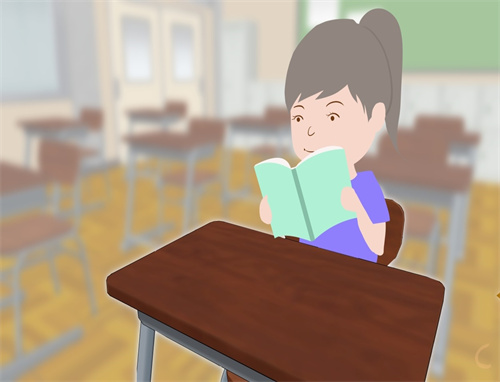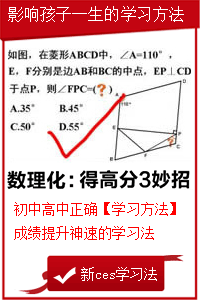托福阅读考试中词汇是重点之一,因为看不懂文章或是不认识词汇题中选项而出错扣分是不太应该的,今天小编给大家带来托福阅读备考词汇相关常见误区解读,希望能够帮助到大家,下面小编就和大家分享,来欣赏一下吧。
【高分基础】托福阅读备考词汇相关常见误区解读
托福阅读备考词汇误区:做阅读不用背单词
首先说第一个问题,不用背单词,是绝对不可能的!当我们在各大网站和论坛进行浏览的时候,我们最为关注的帖子,就是15天搞定托福考试,抑或是一战轻松考到托福110分。毫不夸张的说,其实这些帖子完全都是无用的帖子。就像我们请教姚明怎么一下子就能摸到2米3,这时姚明会告诉你,首先要抬起手臂,然后大臂拖动小臂,最后用手触及2米3就好了。
但是实际上姚明只是因为长得个子高,所以轻松就能摸到2米3,但是对于我等如假包退,如假包换的纯屌丝来说,要想摸到2米3,其实姚明说的大多没用,我们要么高高蹦起,要么找个梯子爬上去才是我们的王道!
其实背托福单词也是这样的,要想搞定托福考试,不要管何等牛人告诉你做做官方真题Official就好了,但是一定记住,那是因为这些牛人早就背下了4记单词和托福单词,不信就拿这些单词书去考考他们。如果他们也没背的话,就直接考考他们是否能把题做对。总而言之,准备托福考试,必须背单词!而且是95%的4级单词和托福单词都要背的像book一样熟悉才可以,换句话说,必须秒杀!不能给自己任何的思考时间!
托福阅读备考词汇误区:不需要4级词汇基础
来说第二个误区。其实放眼大陆的所有托福单词书,其实都是在默认一点的,就是这些单词书其实都是去掉了大学4级单词的,换而言之,所有单词书的寓意都是,至少要有大学6级基础(这里没有写错,其实过了大学4记得很多人,50%的大学4级单词都没记熟),否则是不应该来谈什么托福考试的。
但是现实的情况是,不要说很多考托福的大学生也就是4级基础的水平,而且其实现在绝大多数的高中生,真的是连4级的基础都没有的,在这种情况下,如果直接背托福单词,而不背4级单词的话,就好像我们用沙子做起了一个10层的大楼,然后告诉你,向上爬吧。
其最终的结果就是,无论如何都只能剩下一身沙子。要想爬楼梯,必须要从1层爬起,没有人可以从5层爬起,这是一个基本的常识,背单词也是这样,要背托福单词,一定先要把4级单词先背了,否则总是会发现句子就是无法理解。其实这个时候,不是你不会技巧,而是你不认识单词!
托福阅读真题原题+题目
Biological diversity has become widely recognized as a critical conservation issue only in the past two decades. The rapid destruction of the tropical rain forests, which are the ecosystems with the highest known species diversity on Earth, has awakened people to the importance and fragility of biological diversity. The high rate of species extinctions in these environments is jolting, but it is important to recognize the significance of biological diversity in all ecosystems. As the human population continues to expand, it will negatively affect one after another of Earth's ecosystems. In terrestrial ecosystems and in fringe marine ecosystems (such as wetlands), the most common problem is habitat destruction. In most situations, the result is irreversible. Now humans are beginning to destroy marine ecosystems through other types of activities, such as disposal and run off of poisonous waste; in less than two centuries, by significantly reducing the variety of species on Earth, they have unraveled cons of evolution and irrevocably redirected its course.
Certainly, there have been periods in Earth's history when mass extinctions have occurred. The extinction of the dinosaurs was caused by some physical event, either climatic or cosmic. There have also been less dramatic extinctions, as when natural competition between species reached an extreme conclusion. Only .01 percent of the species that have lived on Earth have survived to the present, and it was largely chance that determined which species survived and which died out.
However, nothing has ever equaled the magnitude and speed with which the human species is altering the physical and chemical world and demolishing the environment. In fact, there is wide agreement that it is the rate of change humans are inflicting, even more than the changes themselves, that will lead to biological devastation. Life on Earth has continually been in flux as slow physical and chemical changes have occurred on Earth, but life needs time to adapt — time for migration and genetic adaptation within existing species and time for the proliferation of new genetic material and new species that may be able to survive in new environments.
1. What does the passage mainly discuss?
(A) The causes of the extinction of the dinosaur
(B) The variety of species found in tropical rain forests.
(C) The impact of human activities on Earth's ecosystems
(D) The time required for species to adapt to new environments
2. The word critical in line 1 is closest in meaning to
(A) negative
(B) essential
(C) interesting
(D) complicated
3. The word jolting in line 5 is closest in meaning to
(A) predicted
(B) shocking
(C) unknown
(D) illuminating
4. The author mentions the reduction of the variety of species on Earth in line 12 to suggest that
(A) new habitats can be created for species
(B) humans are often made ill by polluted water
(C) some species have been made extinct by human activity
(D) an understanding of evolution can prevent certain species from disappearing
5. The author mentions all of the following as examples of the effect of humans oil the world's
ecosystems EXCEPT
(A) destruction of the tropical rain forests
(B) habitat destruction in wetlands
(C) damage to marine ecosystems
(D) the introduction of new varieties of plant species
6. The author mentions the extinction of the dinosaurs in the second paragraph to emphasize
that
(A) the cause of the dinosaurs extinction is unknown
(B) Earth's climate has changed significantly since the dinosaurs' extinction,
(C) not all mass extinctions have been caused by human activity
(D) actions by humans could not stop the irreversible process of a species' extinction
7. The word magnitude in line 20 is closest in meaning to
(A) concern
(B) determination
(C) carelessness
(D) extent
8. According to the passage , natural evolutionary change is different from changes caused by
humans in that changes caused by humans
(A) are occurring at a much faster rate
(B) are less devastating to most species
(C) affect fewer ecosystems
(D) are reversible
9. With which of the following statements would the author be most likely to agree?
(A) Human influence on ecosystems should not be a factor in determining public policy.
(B) The extinction of a few species is an acceptable consequence of human progress.
(C) Technology will provide solutions to problems caused by the destruction of ecosystems.
(D) Humans should be more conscious of the influence they have on ecosystems
PASSAGE 41 CBBCD CDAD
托福阅读真题原题+题目
Railroads reshaped the North American environment and reoriented North American behavior. In a quarter of a century, claimed the Omaha Daily Republican in 1883, they have made the people of the United States homogeneous, breaking through the peculiarities and provincialisms which marked separate and unmingling sections.
The railroad simultaneously stripped the landscape of the natural resources, made velocity of transport and economy of scale necessary parts of industrial production, and carried consumer goods to households; it dispatched immigrants to unsettled places, drew emigrants away from farms and villages to cities, and sent men and guns to battle. It standardized time and travel, seeking to annihilate distance and space by allowing movement at any time and in any season or type of weather. In its grand and impressive terminals and stations, architects recreated historic Roman temples and public baths, French chateaus and Italian bell towers — edifices that people used as stages for many of everyday life's high emotions: meeting and parting, waiting and worrying, planning new starts or coming home.
Passenger terminals, like the luxury express trains that hurled people over spots, spotlight the romance of railroading. (The twentieth-Century Limited sped between Chicago and New York in twenty hours by 1915). Equally important to everyday life were the slow freight trans chugging through industrial zones, the morning and evening commuter locals shuttling back ions and urban terminals, and the incessant comings and goings that occurred in the classifications, or switching, yards. Moreover, in addition to its being a transportation pathway equipped with a mammoth physical plant of tracks signals, crossings, bridges, and junctions, plus telegraph and telephone lines the railroad nurtured factory complexes, coat piles, warehouses, and generating stations, forming along its right-of-way what has aptly been called the metropolitan corridor of the American landscape.
1. What does the passage mainly discuss?
(A) The influence of ancient architecture on the design of railroad terminals
(B) The importance of natural resources in the development of railroads
(C) The railroad's impact on daily life in the United States in the nineteenth century
(D) Technological improvements in the area of communication in the nineteenth century
2. It can be inferred from the quote from the Omaha Daily Republican (line 2-4) that railroads
(A) made all sections of the nation much wealthier
(B) brought more unity to what had been a fragmented nation
(C) reduced dependence on natural resources
(D) had no effect on the environment of the United States
3. The word it in line 7 refers to
(A) transport
(B) scale
(C) production
(D) railroad
4. The word drew in line 8 is closest
(A) obliged
(B) designed
(C) helped
(D) attracted
5. The word annihilate in line 9 is closest in meaning to
(A) conquer
(B) utilize
(C) separate
(D) mechanize
6. The word Moreover in line 20 is closest in meaning to
(A) consequently
(B) furthermore
(C) although
(D) because
7. All of the following were true of impressive passenger terminals EXCEPT:
(A) Their architecture was influenced by the architecture of Europe.
(B) Luxury express trains traveled between them.
(C) They were usually located in small towns.
(D) They were important to many commuters.
8. According to the passage , which type of development lined the area along the metropolitan
corridor?
(A) Stores and shopping areas
(B) Recreational areas
(C) Industrial
(D) Agricultural
9. The word aptly in line 24 is closest in meaning to
(A) appropriately
(B) virtually
(C) consistently
(D) incessantly
10. The author mentions the Twentieth-Century Limited as an example of
(A) a freight train
(B) a commuter train
(C) a luxury train
(D) an underground train
11. The author gives a synonym for which of the following words?
(A) homogeneous (line 3)
(B) standardized (line 9)
(C) temples (line 11)
(D) classification(line 20)
PASSAGE 42 CBDDA BCCAC D
托福阅读备考词汇相关常见误区解读
上一篇:托福阅读提升不能只顾看课外书籍






